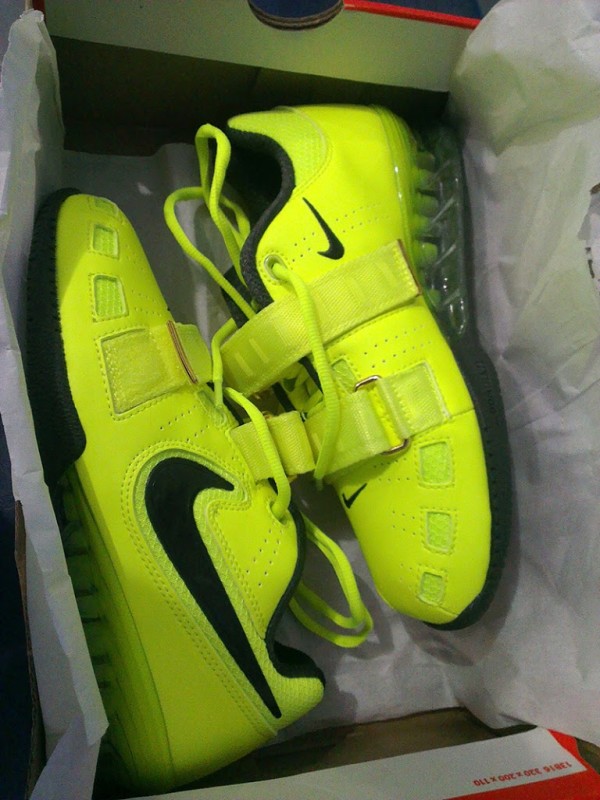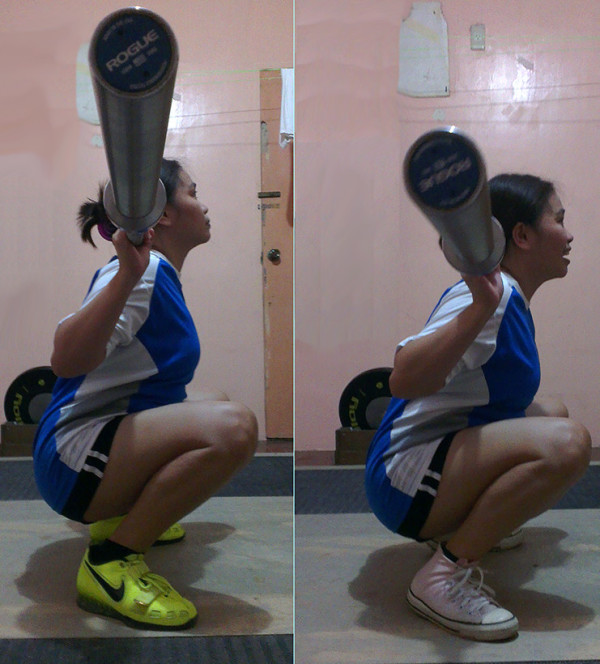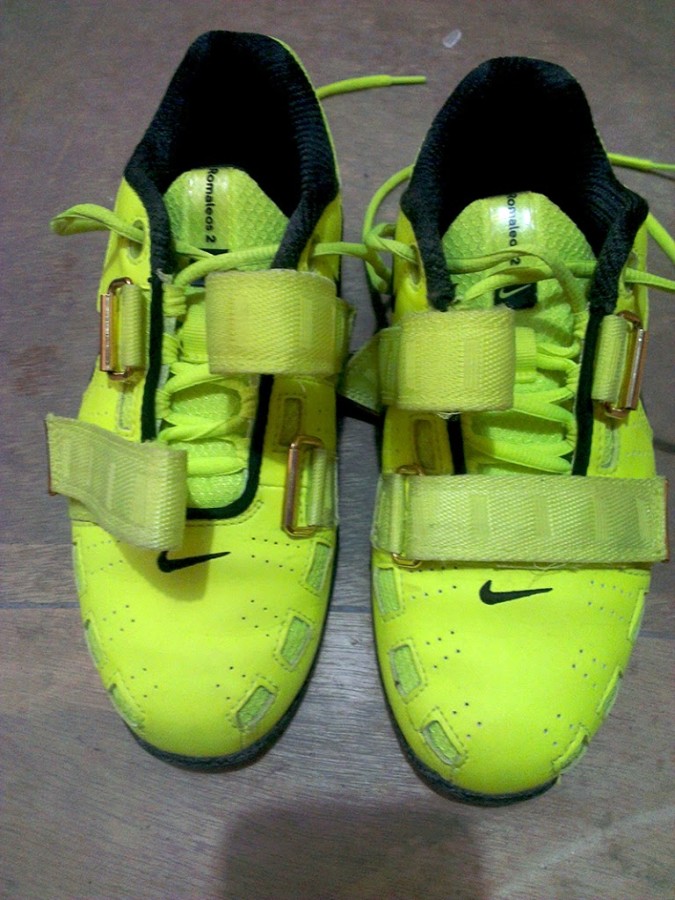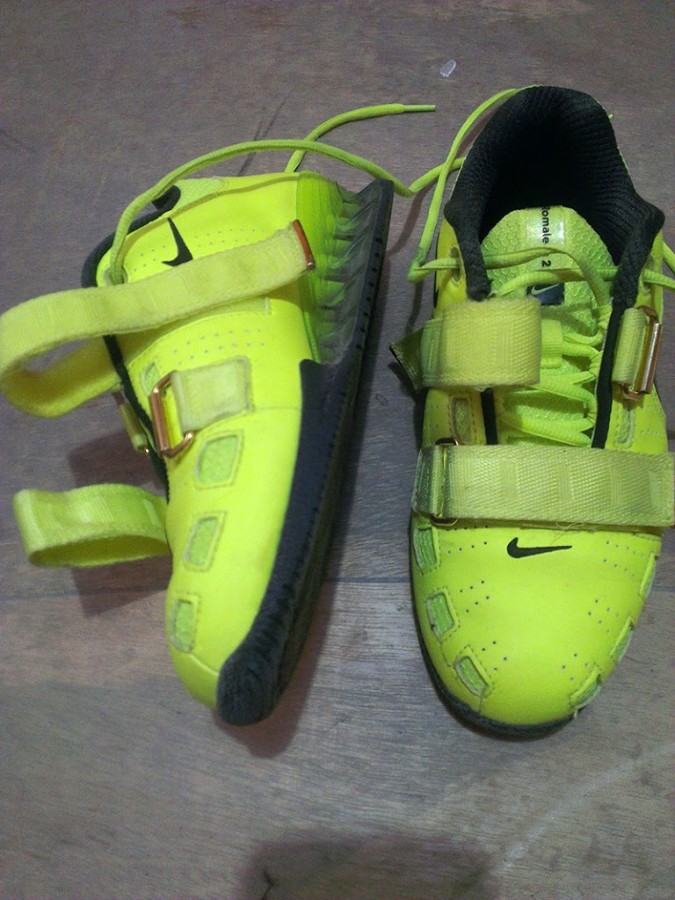In strength training, it is important to maintain stability to keep safe and to maximize performance.
The back squat is one of the primary exercises in strength training. It is a simple exercise where you load up the barbell with weights, put it on your back, squat down and then stand back up. In this exercise, stability is very important to keep safe and avoid injury. I wore running shoes when I first started squatting. It was fine until I started adding weights. The cushy soles of the shoes caused my feet to bounce and wobble when trying to stand up from the bottom position of the squat. My Nike Romaleos 2 when it arrived.
My Nike Romaleos 2 when it arrived.
I owned a pair of Chucks and brought them to the gym with me. Its rigid sole allowed me to be more stable when performing the heavy lifts. There was no bounce or wobble.
However, my anatomical proportions put me into a bit of a disadvantage when performing the squat. I have fairly long femurs relative to my lower leg and torso. This caused my torso to lean forward at an angle that is greater than what is ideal at the bottom of the squat. The lean put most of the force of the weight on my lower back instead of having it divvied up between the legs and the back.
I asked around on how to deal with the lean and I was recommended to wear weightlifting shoes. Weightlifting shoes are designed to provide stability for its sole has no cushion, no spring and no bouncing effect. What separates a weightlifting shoe from Chucks is the heel height. Weightlifting shoes have heels that helps put the lifter in an ideal and more advantageous mechanical position when performing the squat. This makes squatting more stable and safer.
Choosing between Nike Romaleos and Adidas AdiPowers
There are many brands of weightlifting shoes but the two currently prominent models are from Nike and Adidas. Asics is also considered one of the best weightlifting shoes and has been used for as long as I can remember. It is, however, difficult to acquire because of it being handcrafted which limits its production volume and also because of the iffy distribution by the Japanese brand.
My choice was between the Adidas AdiPowers and Nike Romaleos 2. These two shoes are not available in the country so I had to search and purchase from online shops. I tried searching for the AdiPowers first but my size was not available in all of the online shops I visited. I then searched for the Romaleos and was happy to find out that FootLocker had my size in stock.
Most of the reviews I found online about the Romaleos described the shoes as being heavy. It was heavy indeed. My boyfriend has a pair of AdiPowers and my Romaleos was significantly heavier. The weight hardly matters with these kind of shoes because you are not going to use it for walking, running or moving around. You wear it when you lift and then take it off right after.
Purchase and Delivery
I bought a pair for a discounted price of $189 (from footlocker.com) and then had it forwarded for $18 which brings the total to $207. It took 13 days from the date of my purchase for the shoes to arrive on my doorstep.
Feel and Durability
I have been using the Romaleos for around eight months now and I think this is enough time for me to create a proper review for it. Unlike running shoes that has to be replaced after one or two years, high-end weightlifting shoes can last for 10 years or more if given the proper care.
The Nike Romaleos 2 oozes with high-end feel and its durability was apparent the first time I wore them. In the last eight months, I have worn the shoes for an average of five sessions per week and with each session lasting around one hour. That is a significant mileage but the shoes look as if they are still brand new.


